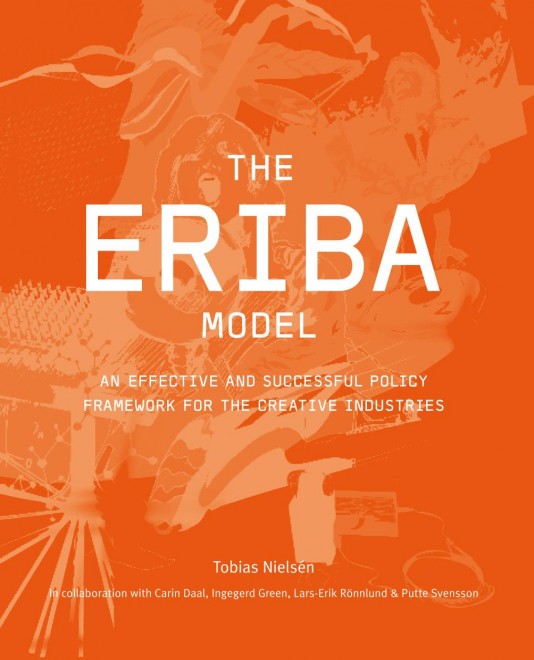The ERIBA model
![]() Posted by Volante / / Research
Posted by Volante / / Research

The ERIBA model is a policy framework for the creative industries and a book by Tobias Nielsén published in 2008 (the Swedish original in 2006; in collaboration with Putte Svensson et al).
The book was launched at the World Cultural Economic Forum in New Orleans, USA, in 2008.
It consists of two parts. The first part describes the cultural and creative industries and the second part explains the model and how growth can be supported and stimulated.
***
What kinds of business models and systems do you need to nurture creativity? What sort of infrastructure is needed – what is the modern equivalent of the railways and shipping ports of the past?
The challenges facing the creative industries today demand that we understand them better and give them a more nurturing environment. This book describes how to do this – based on ERIBA, a model specifically developed for supporting and stimulating growth in the creative industries. It shows the need for initiatives in, and collaboration between, the areas of education (E), research (R), industry (I) and business (B), and the arts/culture (A). The model has its origins in the former music festival city of Hultsfred and has been applied successfully and developed further by and with Sweden’s Knowledge Foundation.
Why a new growth model? Because ERIBA takes into account the special properties of the creative industries, and stresses that they are more likely to thrive in the context of a society with a rich cultural life.
We are living in dynamic times. The consumption of culture is on the rise in general, but culture is also being consumed in new and different forms. Our book concludes with the Swedish perspective, and proposes ten focus areas with concrete suggestions for stimulating the creative industries.

 Svenska
Svenska